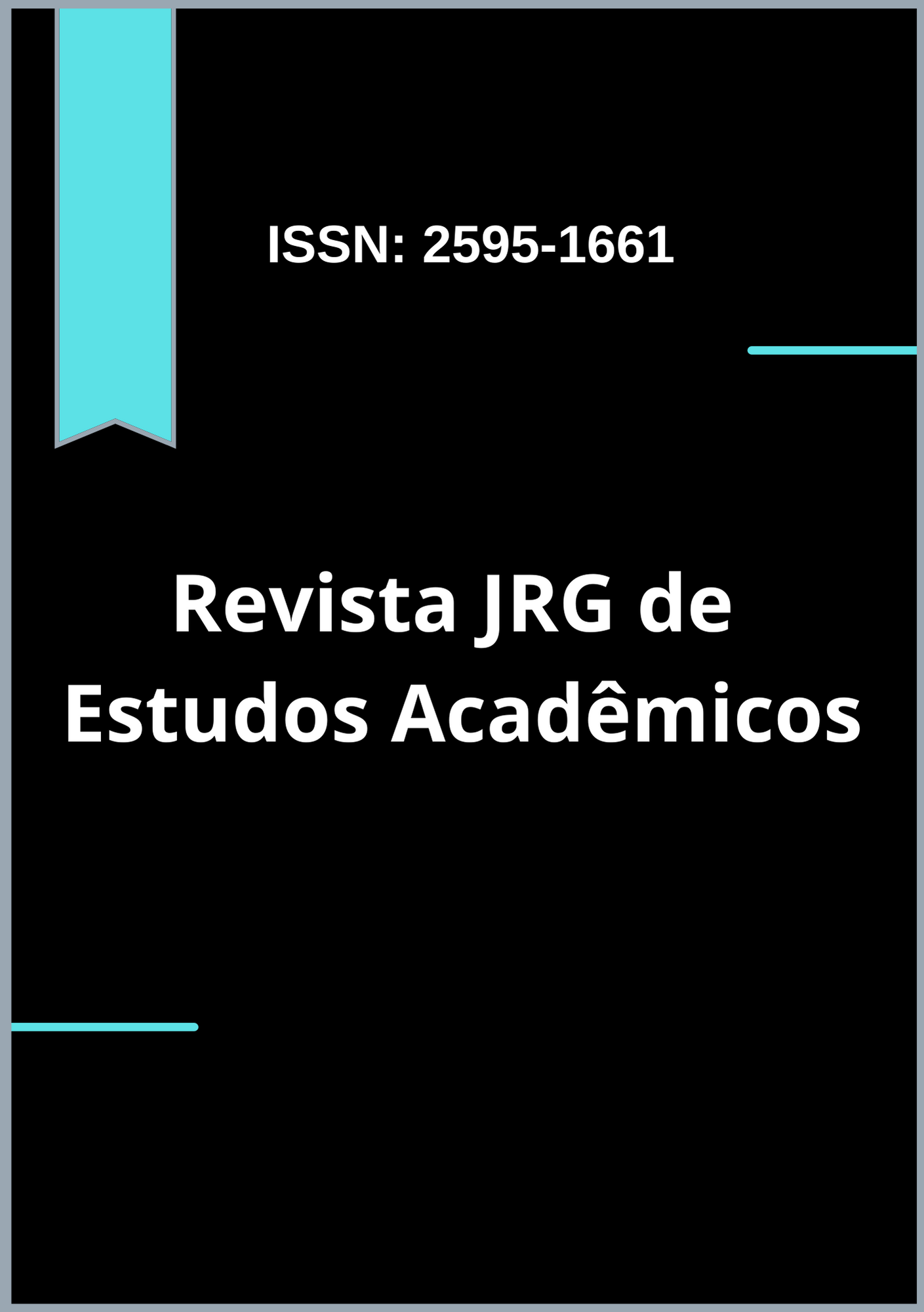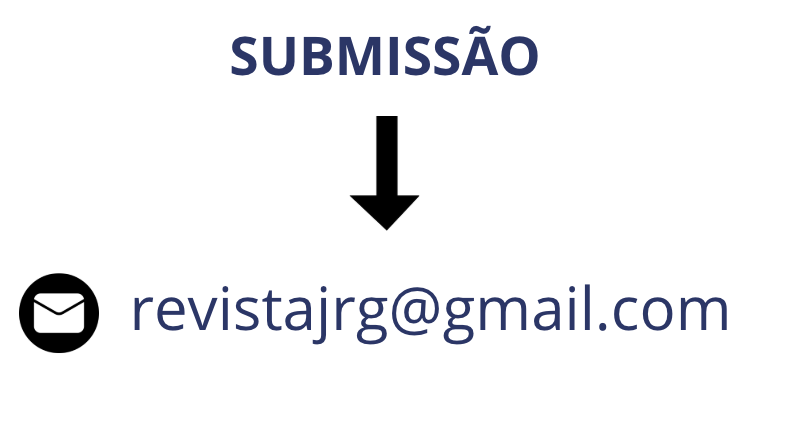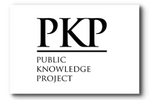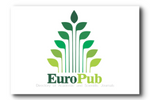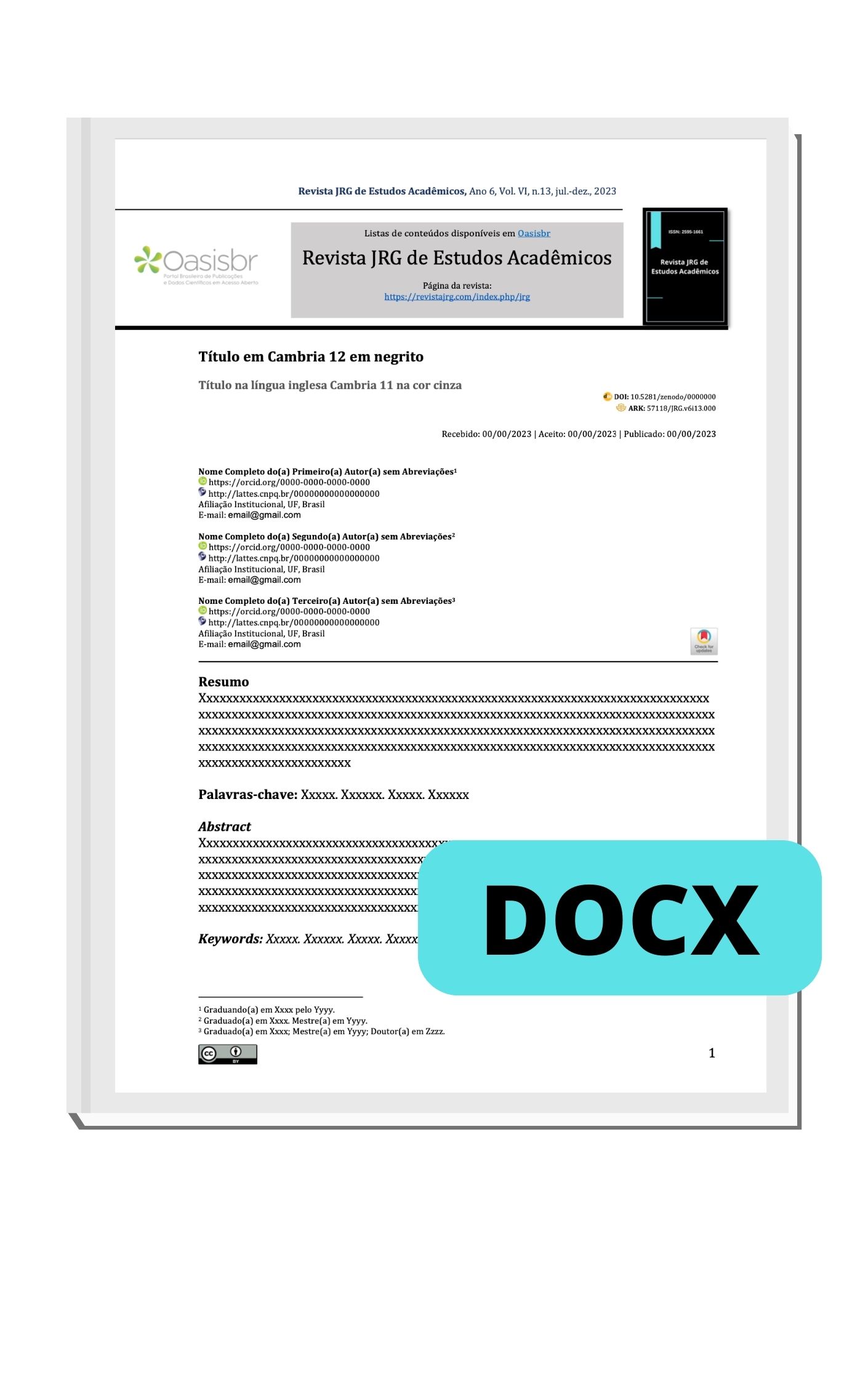O Papel da Enfermagem na Prevenção e Controle da Infecção pelo Papilomavírus Humano (HPV): Uma Revisão Integrativa
DOI:
https://doi.org/10.55892/jrg.v8i19.2564Palabras clave:
Enfermagem, Prevenção, Papilomavírus Humano, Saúde Pública, VacinaçãoResumen
O Papilomavírus Humano (HPV) representa um dos principais desafios de saúde pública, sendo responsável por infecções persistentes que podem evoluir para câncer cervical e outras neoplasias. No Brasil, a elevada incidência do HPV e a baixa adesão à vacinação tornam urgente o fortalecimento de estratégias preventivas nos serviços de saúde. Diante desse cenário, este estudo teve como objetivo analisar, por meio de revisão integrativa da literatura, o papel da Enfermagem na prevenção e no controle da infecção pelo HPV. Trata-se de uma revisão integrativa conduzida nas bases LILACS, MEDLINE, SCOPUS e PUBMED, utilizando descritores relacionados à assistência de enfermagem e à prevenção do HPV. Foram incluídos estudos primários publicados entre 2019 e 2024, em português e inglês, totalizando seis artigos selecionados após aplicação dos critérios de inclusão e exclusão. Os resultados evidenciaram que a Enfermagem tem papel central na promoção da vacinação, na educação em saúde e no rastreamento precoce de lesões precursoras do câncer do colo do útero. A utilização de tecnologias digitais, estratégias de comunicação motivacional e abordagens culturalmente adaptadas mostraram-se eficazes na ampliação da cobertura vacinal e na redução da hesitação da população. Conclui-se que a atuação do enfermeiro, pautada em educação, empatia e inovação tecnológica, é essencial para o fortalecimento das políticas públicas de prevenção do HPV. O protagonismo da Enfermagem contribui significativamente para a promoção da saúde, o controle da infecção e a redução dos índices de morbimortalidade associados ao vírus.
Descargas
Citas
AMIN, S. M. et al. Unlocking prevention: the role of health literacy in cervical cancer screening: community nursing perspective. BMC Nursing, v. 24, n. 1, 2025.
ATEŞEYAN, Y.; GÜNGÖRMÜŞ, Z. Web and theory-based motivational interviews in encouraging mothers for HPV vaccination of their daughters: A randomized controlled study. Journal of Pediatric Nursing, v. 78, p. e279–e288, 2024.
BEESLAAR, J. et al. Safety data from the MenB-FHbp clinical development program in healthy individuals aged 10 years and older. Vaccine, v. 40, n. 12, p. 1872–1878, mar. 2022.
BERENSON, A. B. et al. A brief educational intervention can improve nursing students’ knowledge of the human papillomavirus vaccine and readiness to counsel. Human Vaccines & Immunotherapeutics, v. 17, n. 7, p. 1952–1960, 3 jul. 2021.
BEURDELEY-FEHLBAUM, P. et al. Evaluation of a viral transcriptome Next Generation Sequencing assay as an alternative to animal assays for viral safety testing of cell substrates. Vaccine, v. 41, n. 37, p. 5383–5391, ago. 2023.
BUSNARDO, D. K. et al. Frequência de lesões HPV induzidas em mulheres atendidas no SUS e sua relação com fatores de risco. Revista Contexto & Saúde, v. 24, n. 48, p. e14482, 22 abr. 2024.
CHAUHAN, S. et al. Knowledge, attitude, and reasons for non-uptake of human papilloma virus vaccination among nursing students. BMC Medicine, v. 23, n. 1, p. 35, 21 jan. 2025.
CHERNICK, L. S. et al. A multi‐media digital intervention to improve the sexual and reproductive health of female adolescent emergency department patients. Academic Emergency Medicine, v. 29, n. 3, p. 308–316, 7 mar. 2022.
DURAND, M. K.; HEIDEMANN, I. T. S. B. Promoção da autonomia da mulher na consulta de enfermagem em saúde da família. Revista da Escola de Enfermagem da USP, v. 47, n. 2, p. 288–295, abr. 2013.
FERNANDES, L. C. S.; OLIVEIRA, R. F. DOS S. A Importância do Enfermeiro na Concientização e Prevençao do HPV. Psicologia e Saúde em Debate, v. 5, n. 1, p. 80–109, 15 jul. 2019.
GAGNEUR, A. et al. A postpartum vaccination promotion intervention using motivational interviewing techniques improves short-term vaccine coverage: PromoVac study. BMC Public Health, v. 18, n. 1, p. 811, 28 dez. 2018.
ILYASOVA, A. A. et al. Use of presumptive recommendations and other strategies to encourage HPV vaccine uptake: Results from a national survey of primary care health professionals. Plos One, v. 20, n. 8 AUGUST, p. 1–11, 2025.
INCA, I. N. DE C. Dados e Números sobre Câncer do Colo do Útero - Relatório Anual. Instituto Nacional de Câncer, p. 28, 2022.
INTERAMINENSE, I. N. DA C. S. et al. Tecnologias Educativas para Promoção da Vacinação Contra o Papilomavírus Humano: Revisão Integrativa da Literatura. Texto & Contexto - Enfermagem, v. 25, n. 2, 2016.
LLAVALL, A. C. et al. Nurses’ and teachers’ perceived barriers and facilitators to the uptake of the Human Papilloma Virus (HPV) vaccination program in Iquitos, Peru: A qualitative study. PLoS ONE, v. 16, n. 7 July, p. 1–16, 2021.
MENZIES, R. et al. A randomised controlled trial of SMS messaging and calendar reminders to improve vaccination timeliness in infants. Vaccine, v. 38, n. 15, p. 3137–3142, mar. 2020.
MOYA, E. M. et al. Addressing knowledge gaps: the key role of community health workers and healthcare providers in human papillomavirus prevention and vaccine uptake in a border community. Frontiers in Public Health, v. 11, 27 set. 2023.
MUAZIZAH, Y. N.; KARTILAH, T.; NURHAYATI, T. Web-based health education utilizing “Sahabat Sehat Serviks” to prevent cervical cancer among adolescent girls. Journal of Holistic Nursing Science, v. 12, n. 1, p. 17–26, 2025.
NELSON, C. W.; MIRABELLO, L. Human papillomavirus genomics: Understanding carcinogenicity. Tumour Virus Research, v. 15, p. 200258, jun. 2023.
OMS, O. M. DA S. Câncer cervical. Disponível em: <https://www.who.int/news-room/fact-sheets/detail/cervical-cancer?utm_source>. Acesso em: 15 set. 2025.
PENICK, E. et al. Feasibility and sustainability of a nurse-led intervention to integrate HPV vaccination into medical processing for active-duty Soldiers. Human Vaccines and Immunotherapeutics, v. 18, n. 7, 2022.
PONTES, B. F. et al. Coordenação do Cuidado no Âmbito do Rastreamento do Câncer de Mama e Colo do Útero. Enfermagem em Foco, v. 15, 31 dez. 2024.
PRATA, R. A. et al. Digital health literacy, behavior and knowledge of adolescents for hand hygiene during the COVID-19 pandemic. Revista Latino-Americana de Enfermagem, v. 32, 2024.
SANTOS, W. M.; SANTOS, D. M.; FERNANDES, M. S. Imunização do HPV no Brasil e propostas para aumento da adesão à campanha de vacinação. Revista de Saúde Pública, v. 57, n. 1, p. 79, 26 out. 2023.
SOUZA, M. T. DE; SILVA, M. D. DA; CARVALHO, R. DE. Revisão integrativa: o que é e como fazer. Eistein, v. 20, n. 1, p. 107–112, 2009.
SOUZA, M. T. DE; SILVA, M. D. DA; CARVALHO, R. DE. Integrative review: what is it? How to do it? Einstein (São Paulo), v. 8, n. 1, p. 102–106, mar. 2010.
TEIXEIRA, J. C. et al. Organization of cervical cancer screening with DNA–HPV testing impact on early–stage cancer detection: a population–based demonstration study in a Brazilian city. The Lancet Regional Health - Americas, v. 5, p. 100084, jan. 2022.
VILAS-BOAS, F. et al. COVID-19 collaborative screening: An action-research project for large scale contact tracing in Northern Portugal. Preventive Medicine Reports, v. 29, p. 101926, out. 2022.
YU, V. G.; LASCO, G.; DAVID, C. C. Fear, mistrust, and vaccine hesitancy: Narratives of the dengue vaccine controversy in the Philippines. Vaccine, v. 39, n. 35, p. 4964–4972, ago. 2021.
